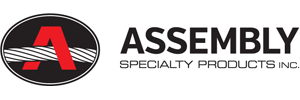Guide to Wire Rope
MENU
- Structural Wire Rope Applications
- Computer-Assisted Design and Detailing
- High Strength Structural Strand
- Custom Finishes
- Pre-stretching
- Striping
- Measuring Wire Rope
- Corrosion Protection
- End Terminations
- Attaching Sockets
- Proof loading
- Order Specifications
- Wire Rope Selection
- Rotation-Resistant Ropes
- Specialized Wire Rope
- Wire Rope Handling and Installation
- Standard Operating Practices
- Wire Rope Inspection
- Technical Info & Specifications
Computer-Assisted Design and Detailing
Computers play an important role for design and engineering in cables and assemblies, enabling accuracy and planning which would not be possible without this assistance. Significant use of custom and specific software is relevant for wire rope and structural strand design, fabrication drawings, and other generic applications.
Computer-assisted detailing enables processing assemblies for complex cable-supported structures. These structures may have several thousand different assemblies or sub-assemblies of different size, measuring tension, end terminations and other variables. The software helps to quickly and accurately process the many variables, and successfully fulfills two important aspects of erection requirements: timely delivery and assured accuracy.
Computer-assisted design involves a custom program which is used to determine precise wire fit and other cable characteristics. Working with input variables ultimately determines optimum cable design.
This program allows the user to accurately predict cable strength, bending stresses, torque and cable weight. Designers need to know precise values, rather than the general or approximate values shown in catalogs, etc.
Software provides theoretical or calculated values; for instance, the calculated torque for a specific cable can now be provided to enable the designer to confidently work with anchorage design. This software also is essential for custom-made cables, as the published, standard values may not apply.

